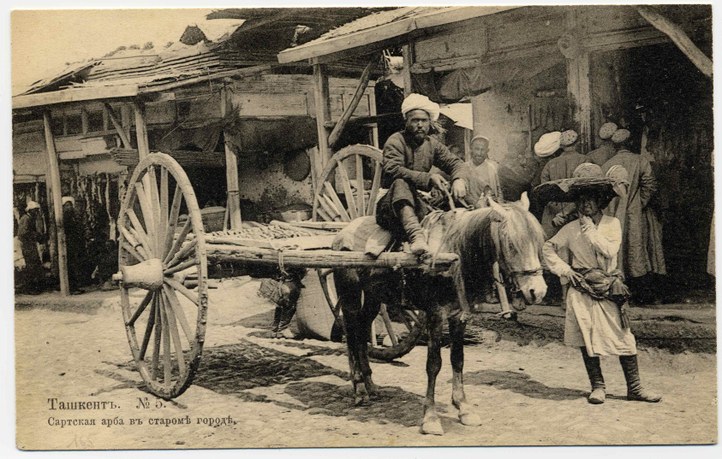Catching the end, convergence or the beginning of (a) world(s)?
The visualization of early-twentieth century Central Asia through postcards of Tashkent and its surroundings.
This exhibition proposes a selection of some thirty postcards from different series that were produced and published in the early 1900s and in the 1910s. They show both general sights and more specific scenes in the city of Tashkent – which was the administrative-military capital of the tsarist Governorate-General of Turkestan and Central Asia’s largest city at the time – as well as in its nearby surroundings. The images show both the more ancient, ‘indigenous’ and the newer, ‘European’ parts of the city. They look at first glance like very separate worlds but were, in fact, intertwined and complementary. More importantly, they reflect the transformation into different forms of modernity the Central Asian region went through at the time.
This exhibition is not meant to be a moral or political judgement about the tsarist system and about the region’s local societies and cultures. The postcards are of course the product of subjective imaginary and of the way their makers and audiences wanted to show and look at the region. Yet they offer a powerful glimpse at worlds, lifestyles and environments which were to be heavily affected if not obliterated following the dramatic historical events – the First World War followed by the Bolshevik coup d’état and the civil war – that would occur only a few years after they were produced.
This exhibition is organized by Ghent University’s Eureast platform in cooperation with Alerte héritage − Observatoire de l’héritage culturel d’Asie centrale from Lausanne, and the Open Central Asian Photo Archives- Открытый центральноазиатский фотоархив .
When?
8-30 November 2022
Where?
Faculty library, Magnel wing, Rozier 44. -1.

